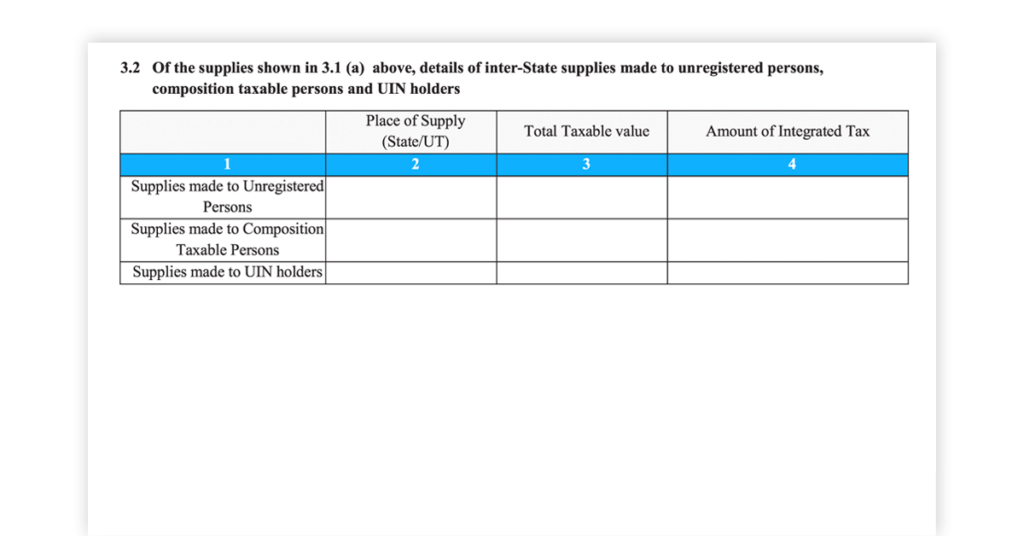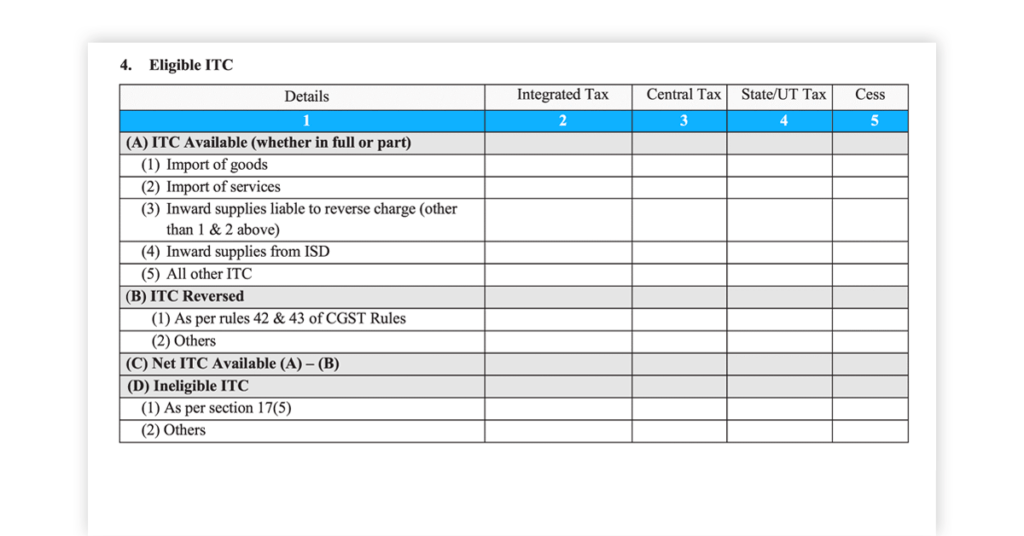How to file GSTR-3B Online and What is GSTR 3B?

The implementation of GSTR-3B in the country has transformed the way individuals and businesses pay taxes.
But there are various aspects of GST that people aren’t familiar with, such as how to search and verify GSTIN and what are different parts of GSTR 3B filing & returns. One of the most essential facets of filing returns is the form GSTR 3B.
GSTR 3B Meaning: What is GSTR 3B?
The GSTR-3B is a combined summary of the return of sales and purchase of supplies that the Government of India has introduced to relax the requirement for businesses.
It is a monthly summary return that the taxpayers should fill by 20th of next month. GST3B helps in the disclosure of supplies made during the month along with the payment of GST, input tax credit claims, reverse charge on specific purchases, and so on.
What is the last day for GSTR-3B filing?
The GSTR-3B for a month should be submitted by the 20th of the next month. For instance, GSTR-3B for August is required to be filed by the 20th of September, and the GSTR-3B for the month of September should be filed by the 20th of October and so on.
Prerequisites for GSTR 3B Filing
- GSTR-3B should be filed by businesses liable to file the monthly returns GSTR-1, GSTR-2, and GSTR-3.
- GSTR-3B can be filed online, through the GSTN portal. The tax can be paid online or via challans in banks.
- Users either need a digital signature certificate or an OTP from their registered phone to verify the return using an EVC (electronic verification code). Users can also file their GST returns using an Aadhar based e-sign.
What’s the Procedure of GSTR 3B Filing?

There are eight simple steps that a taxpayer needs to follow in order to file GSSTR 3B every month. We have broken down the process into seven simple steps for a better understanding of the whole filing procedure:
1. On the GSTR-3B, taxpayers will have to provide their GSTIN
2. Next, they need to provide their legal name and fill other sub-sections such as:

3.1. Details of sales and purchases which are liable for reverse charge:
In this section, taxpayers need to enter their total taxable value, i.e., the full value of items and services on invoices + debits – credits + advance tax received, along with taxes collected under different tax segments (IGST, CGST, SGST/UTGST, and Cess) for the following:
a) Sales supplies (zero-rated supplies – including goods and services exported from overseas, listed exports or those traded to SEZ units or developers).
b) Sales supplies (except zero-rated, nil rated and exempted) – including all regular taxable sale of goods and services.
c) Other supplies such as nil-rated and exempted supplies. It’s crucial to keep in mind that nil-rated and exempted products and services under GST are two different sections.
You can claim input tax credit for nil-rated goods, even though they are not levied at the time of sale.
The Point of Sale (PoS) does not collect exempted products and services, and no input tax credit can be claimed in this case.
d) Purchase goods liable for a reverse charge (transactions where the taxpayer is liable to pay the tax to the government on behalf of a supplier who may/may not be registered under GST).
e) Non-GST sales supplies
f) Cess is applicable to a few sectors, such as tobacco. If a business is not involved in sales of such products, cess-related details are not required.

3.2. Details of interstate sales made to unregistered buyers, buyers registered under the composition scheme, and Unique Identification Number holders:
Taxpayers must provide details about the location of supply (the customer/business location where goods and services will be delivered), the total taxable amount, and the levied IGST for the following types of interstate sales in this section.
- Supplies made to unregistered individuals/businesses
- Supplies made to Composition Taxable businesses
- Supplies made to Unique Identification Number holders

4. Eligible Input Tax Credit (ITC): The software will calculate the final tax payment and credits based on the business’s income tax credit. In this section, the taxpayer needs to fill details about the following:
- ITC available (whether in whole or partial): Taxes related to import of goods and services, inward supplies accounted for a reverse charge, inward supplies from input service distributors, and all miscellaneous Input Tax Credits which haven’t been counted under subsections (1) & (2) of section 4A.
- ITC Reversed (according to sections 42 and 43 of CGST rules): Taxpayers must provide details of goods and services they have utilized for non-business purposes. The taxpayer will be unable to access the Input Tax Credit (ITC) for such items and services since, legally, taxpayers can only claim ITC on taxable goods and services when they sell them or use them for business-related activities.
- Net ITC available: You can calculate this by subtracting the available ITC (A) from the reversed ITC (B).
- Ineligible ITC (according to section 17(5) and others): Block credits occur when specific services are involved, resulting in the need to handle and manage them. The taxpayer is not allowed to claim Input Tax Credit (ITC) on services such as transportation (unless they are made for supplying goods), health services, food, transport services for employees, and beauty services.

5. Amount of nil-rated, exempt, & non-GST inward supplies: Under this, the taxpayer should enter tax details for intrastate and interstate purchases. This includes goods bought from a supplier, purchase of products and services that are either exempt from GST, nil-rated or non-GST supplies.
5.1. Interest and Late fee payable: This might be applicable for individual businesses that have some additional tax liabilities imposed on them (due to failure of compliance with one or several GST regulations). Businesses must declare the aggregate amount of interest and the applicable late fee on taxable items, whether or not they attract tax on reverse charges under various taxable provisions such as IGST, CGST, SGST/UTGST, and Cess.

6. Payment of tax: A business has to pay the GST they owe to the government before filling up this section since, it covers the total tax amounts paid for CGST, SGST, IGST, and cess. The taxpayer must include the overall tax payable, tax paid through ITC (by offsetting the amount paid on inputs as tax), tax paid against TDS/TCS credits, and the tax paid in cash (including amounts paid as interest and late fees).

7. TDS/TCS credit: Whenever a customer deducts or collects tax at source, then the business receives credit against it. If the taxpayer has accumulated similar credits during a specific month (known as TDS/TCS credits), this section categorizes them under different tax brackets such as IGST, CGST, SGST/UTGST.
Finally, the authorized taxpayer signs the GSTR-3B form and submits it after filling in all the aforementioned details.
Who needs to go for GSTR 3B filing?
GST mandates the filing of GSTR 3B return to every eligible individual/business, including taxpayers with nil returns. All taxpayers, regardless of the returns, must file GST3B as a self-declaration form on a monthly basis.
What details to be furnished?
The details that are needed to be furnished include:
- Details of purchases and sales made by the taxpayer.
- Liable Tax
- Liable Input Tax Credit
- Tax Paid
GSTR 3B Format
1. GSTIN: GSTIN is a 15-digit GST identification number. By default, this column will already fill.
2. Registered Name: Like GSTIN, this field will also remain filled by default at the time when the user logs-in to the GST Portal. The trade name needs to be provided separately.
3. Details of Outward Supplies (Exports) (Part A): You need to fill the entire taxable value with the total tax amount.
- Taxable Exports (Zero Rated)
- Export towards: Nil Rated and Value Exempted
- The reverse charge mechanism requires the importer to pay the import charges.
- Export for Non-GST values
4. Inter-state supplies made to unregistered individuals/dealers, businesses and UIN holders (Part B): This section shows the break-down of the export of supplies made to unregistered individuals or dealers, businesses and UIN Holders. Calculating this section holistically with taxable value and gross IGST levied on the supplies requires a state-wise/union territory-wise analysis.
5. Details of eligible Input Tax Credit:
This summary outlines how to determine net Input Tax Credits (ITC) by assessing eligible ITC and ITC reversals.
- ITC Availability (whether in whole or partial): Consider the following details while mentioning the bifurcation of inward supplies on which users can claim the Input Tax Credit (ITC).
a) Inward supply of Goods: Tax credit of IGST paid on the import of goods.
b) Import of Service: Tax credit of IGST paid on the import of services.
c) Imports liable to reverse charge: Mention the GST paid on inward supplies that are liable for reverse charges, such as sponsorship services, excluding the import of goods or services.
d) Inward Supplies from ISD: Input tax credit from Input Service Distributor (ISD).
e) Other ITC: In addition to the ones mentioned above, this section requires mentioning the ITC of other inward supplies.
- Reversing the ITC: The goods and services used for non-business purposes or partly used for exempt supplies need to mention ITC reversibility on their usage. Furthermore, if you claim the deduction on taxable components of capital goods and machinery, the authorities will not allow the input tax credit (ITC).
- ITC available as reported: When the system reverses the amount of ITC, it makes the resultant balance eligible for claiming as ITC.
- Ineligible ITC: GST paid on inward supplies filed as negative aren’t eligible for ITC.
6. Details of nil‐rated, exempt and non‐GST inward supplies: In this field, the value of imports pertaining to transactions with suppliers under the nil rated, composition scheme, Non-GST supplies, and exempt supplies need to be provided during the tax period.
7. Payment of tax: In this section, you have to make a declaration of the self-ascertained tax payable. You need to base this declaration on the details of export and import of supplies, which you are liable to pay on reverse charge. You need to fill the tax-wise bifurcation of tax payment by utilizing ITC and making a cash deposit.
Frequently Asked Questions (FAQs) on GSTR 3B
I have no sales or purchases for a particular month. Do I still need to file GSTR-3B?
Yes, even if no sales have been made for a particular month, GSTR-3B has to be filed by every registered person/business.
Do I need to provide invoice-wise details while filing the return?
Only total monthly figures are required in GSTR-3B. An invoice-wise breakup is not needed.
I have 2 GSTINs, one in Chandigarh and another in West Bengal. Can I file 1 GSTR-3B for both registrations?
No. GSTR-3B needs to be filed separately for every GSTIN. Returns cannot be clubbed together.
Will there be any invoice verification in GSTR-3B?
Invoice verification isn’t conducted in GSTR-3B. This return is a self-declaration by the taxpayer.
Do I need to file GSTR-1, GSTR-2, and GSTR-3 after filing GSTR-3B?
GSTR-1 has to be filed monthly or quarterly depending on the turnover of your business. Due dates and filing of GSTR-2 and GSTR-3 need to be filed separately, while you need to file GSTR-3B every month.
Anurag Vats is an in-house technical content writer at Techjockey who is fond of exploring the latest avenues in the field of technology and gadgets. An avid reader of fiction and poetry, he also likes to dabble with brushes and poetry and loves to cook in borrowed kitchens.... Read more




























